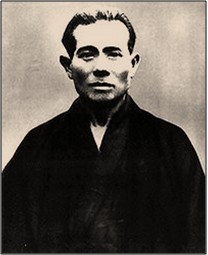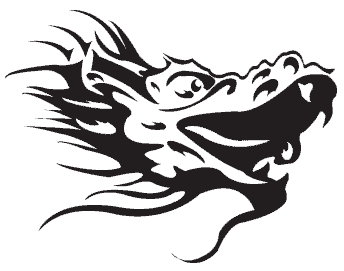San Sei Ryu Kata
(Thirty six hands)
Sanseiryu was introduced to Okinawa by Kanbun Uechi in 1910 and was one of three original katas to come out of China.
Kanbun grew up in the mountain farming village of Izumi on the Motobu peninsula of Okinawa. In his youth, he studied bojitsu with Motobu experts.
In 1897 at the age of 19, Kanbun fled to Fuzhou in Fukien Province, China both to escape Japanese military conscription and to fulfill his dreams of studying martial arts with Chinese masters.
Kanbun took up the study a Kung Fu system called “Pangai – Noon” (or Pangainun), under a Chinese master named Shushiwa. Uechi received a certificate of mastery in 1904, and he later opened his own dojo in Nansoye, China.
After returning to Okinawa in February 1910, Uechi moved to Wakayama City, in the Wakayama Prefecture of mainland Japan, where he established the Institute of "Pangainun-ryu (half-hard and soft) Todi-jutsu", and began the process of launching his own dojo. Uechi continued to teach in Wakayama until 1948.The style he taught was renamed in 1940 to “Uechi Ryu"Karate in his honor, and is one of the four major styles of Okinawan Karate.
Pangai-noon was a style of Southern Chinese kung fu taught by Zhou Zhi He (Shu Shi Wa). (1874-1926) Shu Shi Wa Pangai-noon technique was based on soft blocks and hard attacks. The four kata taught by Shu Shi Wa were: Sanchin Seisan, Sanseiryu and Suparinpei.
Zhou Zhi originated from Minhou, Fujian and was a civil boxing teacher. He reportedly practiced Crane and Tiger boxing, in addition to hard and soft chi kung and was noted for his iron palm technique. It has also been speculated that Wu Hien Kui (Jap. Go ken ki) was also a student of Zhou.

Kanbun Uechi

Shu Shi Wa
Sanseru is found in the following styles of Chinese Boxing: Crane, Tiger, and Dog boxing.
Feng Yiquan, who lived during the Ming Dynasty (1522-67) developed this particular method of using variations of '36' forbidden points to overcome his opponents. Other disciples of Feng created other quans expanding the number to 72 and ultimately 108 (Suparinpei).
It is said to derive from six times six. The first six representing ear, eye, nose, tongue, body and spirit. The second set of six representing; colour, voice, taste, smell, touch and justice. Miyagi Sensei studied this Kata under a direct student of RuRuKo during his studies in Fuzhou, China c1916. From its numerical description, it would seem to have its roots in Buddhism. This is not to suggest that there is a religious element or implication with this Kata, rather that Buddhism was a part of the culture of the time. It should be noted that numbers had a very important role in the language of the more ancient Chinese before the invention of kanji.
The other Kata named after numbers is that they refer to a systematic method of understanding groupings of vital acupressure points. It is this ancient practice that the martial arts was based upon and developed.
Warning:
If you perform any technique shown here in class or in public, you do so at your own risk.
We assume no responsibility for the use or misuse of the information provided which results in injury or loss.
Copyright: Tom Hill 2012 Goju.co.uk All rights reserved.
UPDATED 1st AUG 2020































